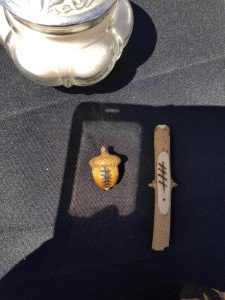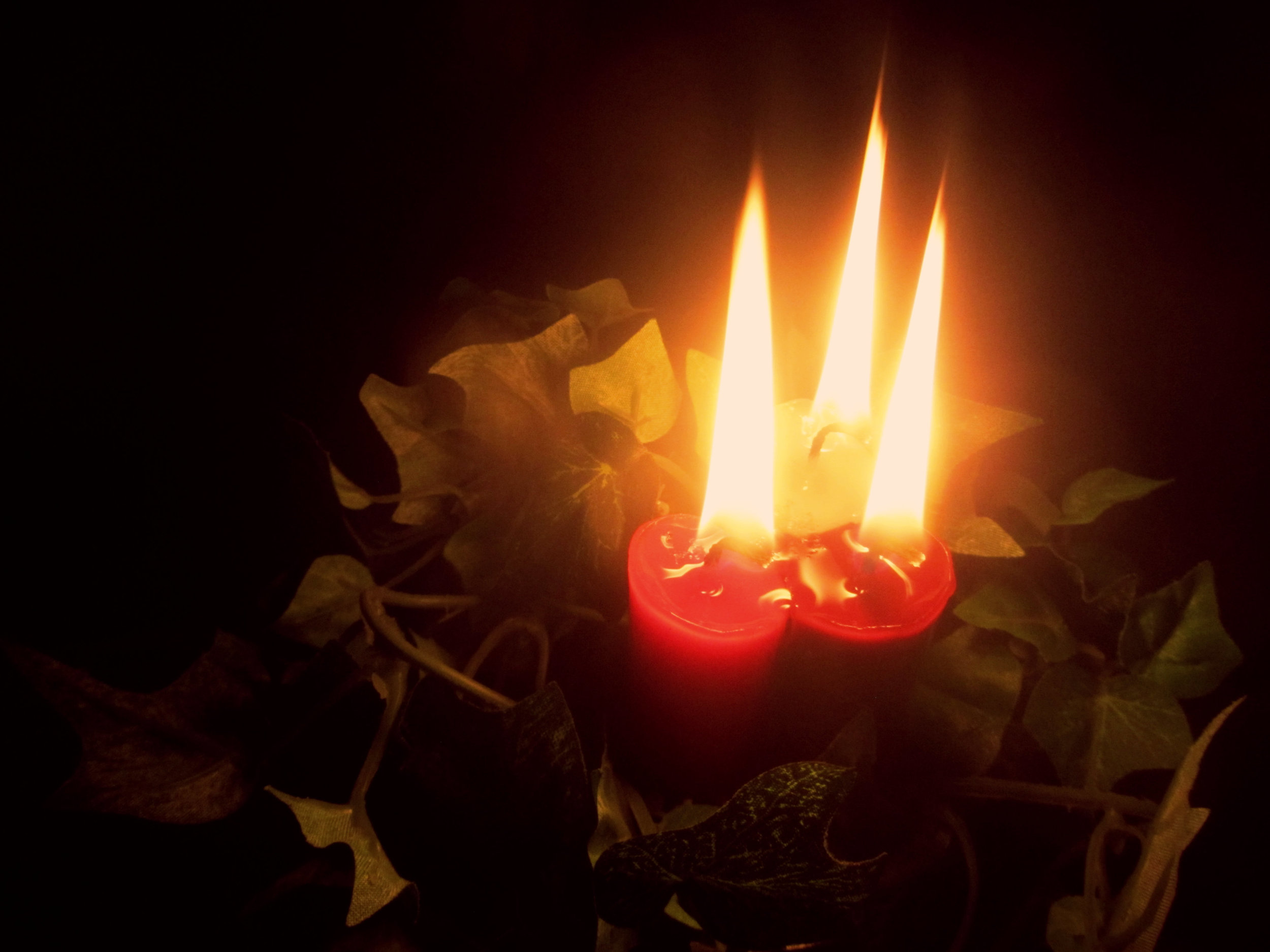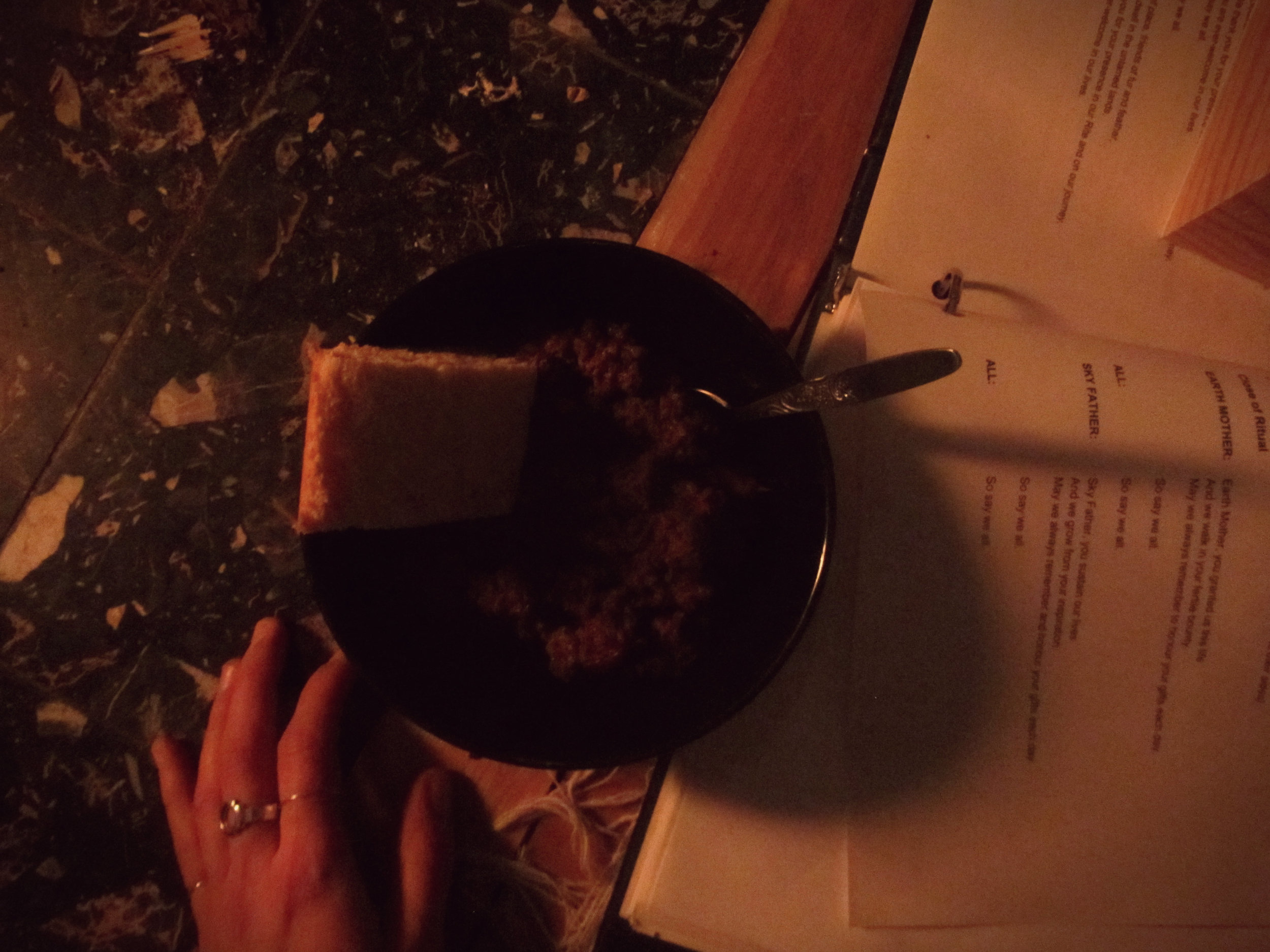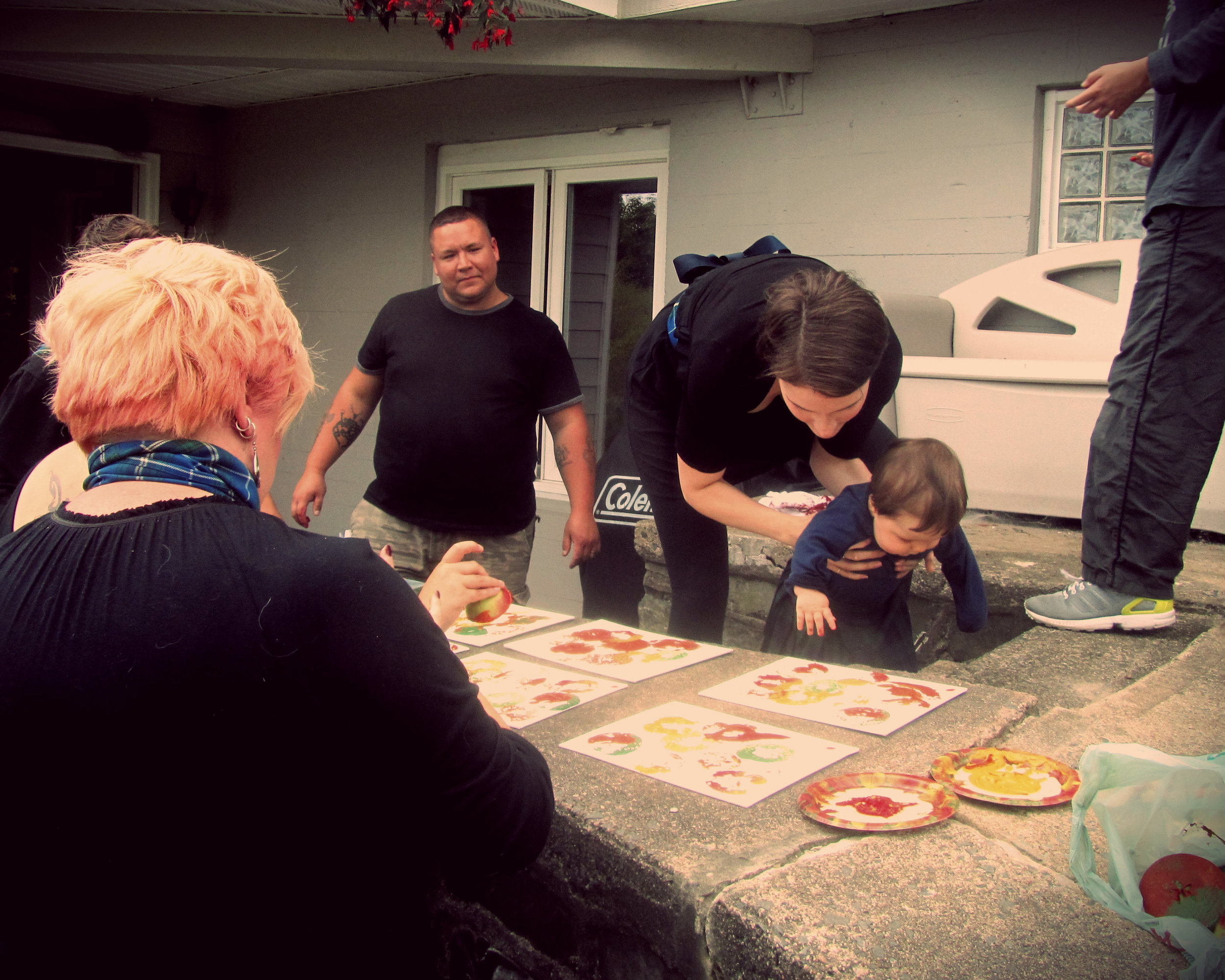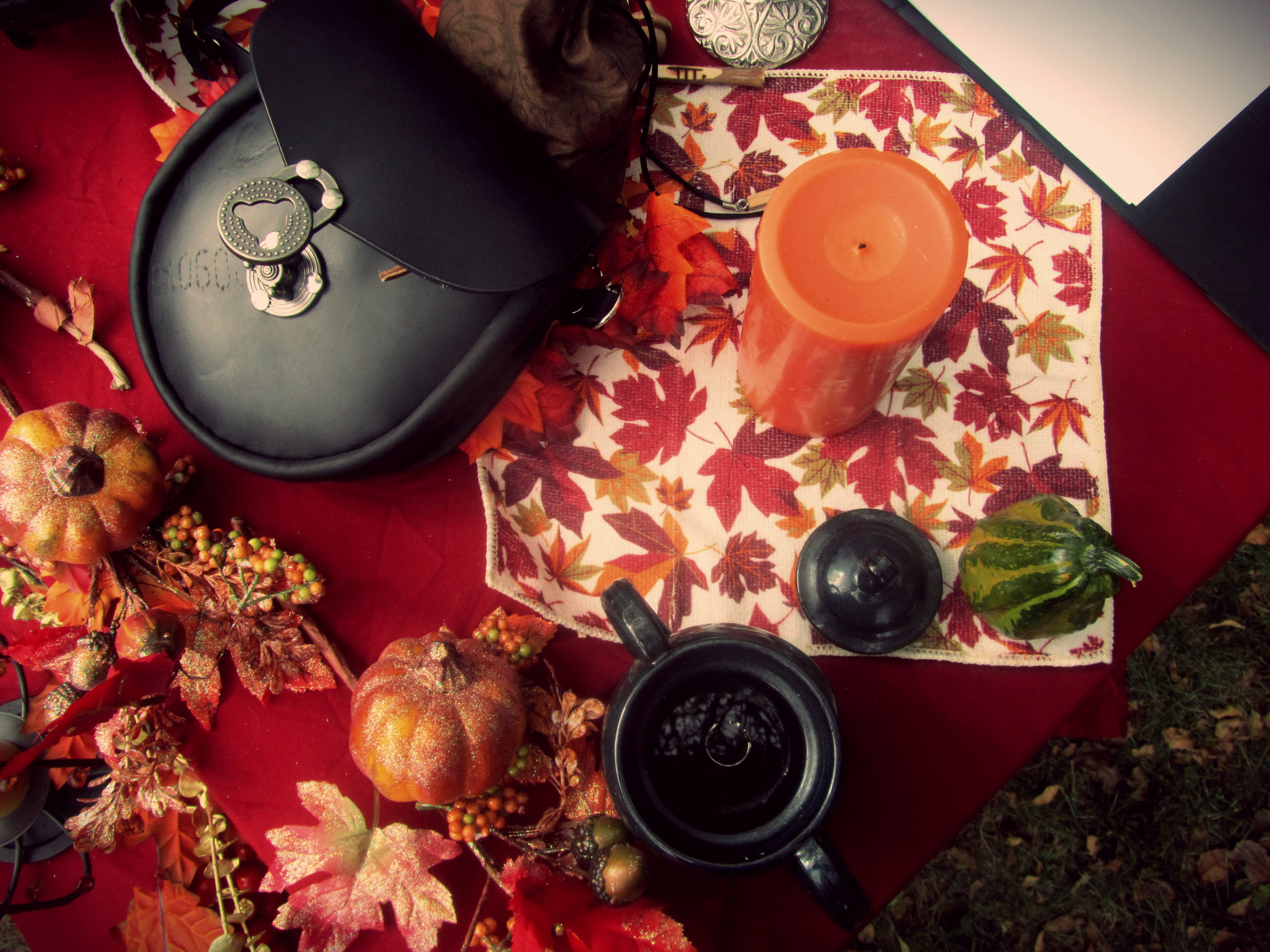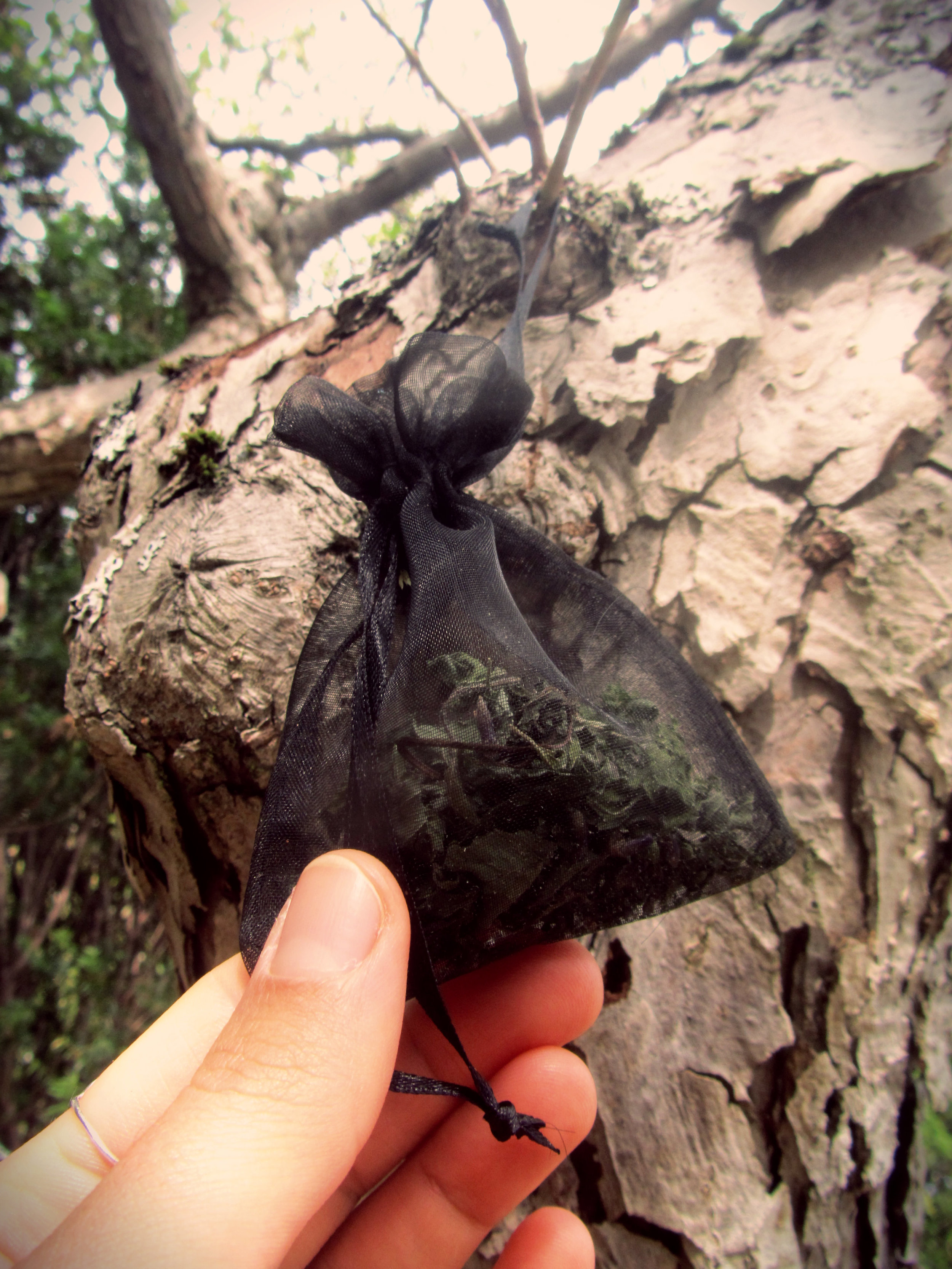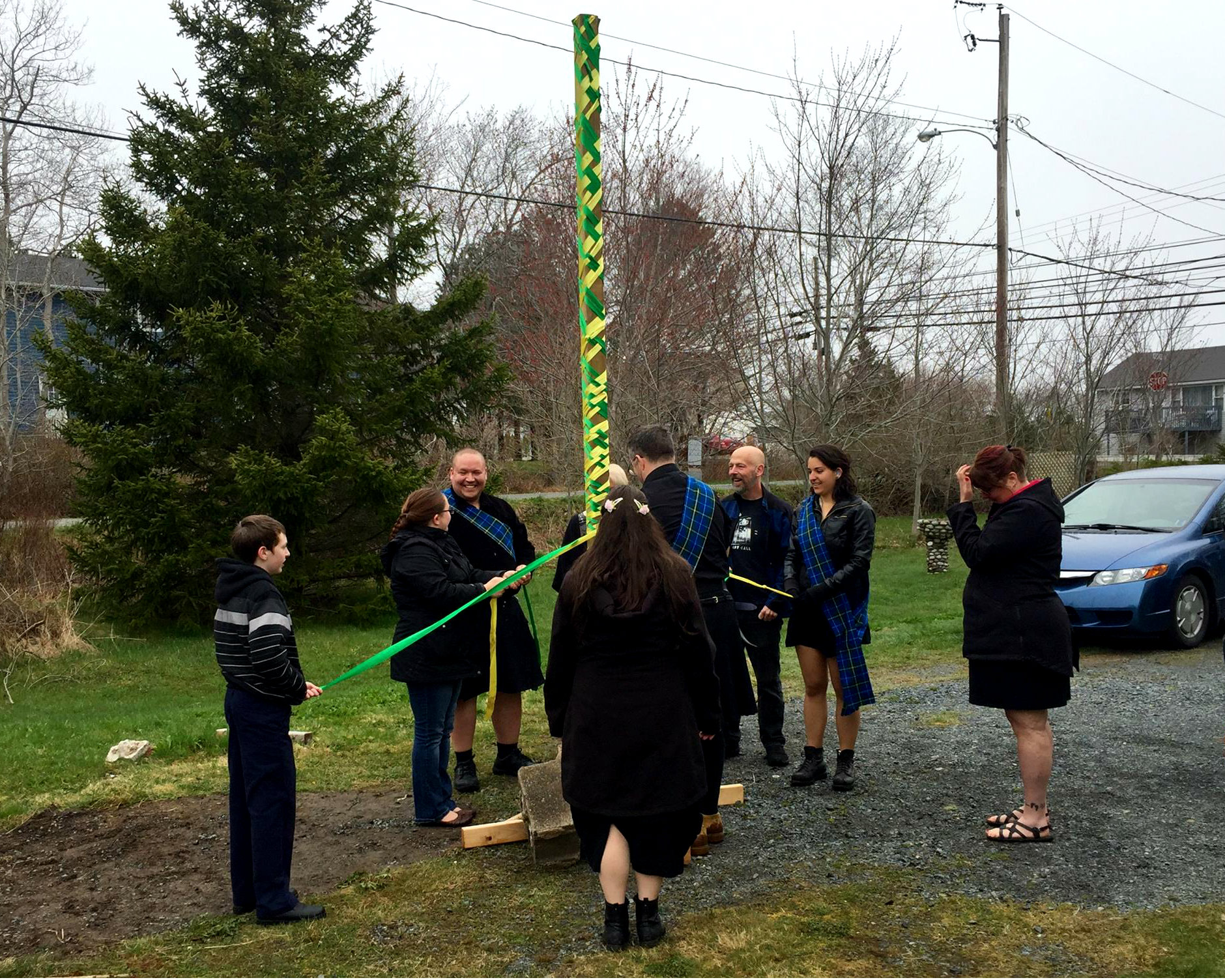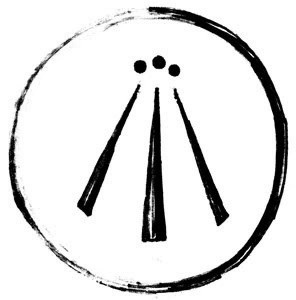
BLOG
Beltane Ritual
Beltane was a great time. We danced the may pole, shared delicious snacks, and had a wonderful ritual with Grove and friends.
During the ritual, we pulled two Oghams as usual and were met with the following: Blackthorn, which represents challenges, difficulty, and poison, followed by Yew, which represents access to ancestors, death, rebirth, and faith. Suffice to say, from great challenges come lessons, new life, and rebirth. We will embrace the challenges that are coming to us, knowing that the outcomes will be worth the efforts and struggle.
Good luck to you all with your Spring and Summer ventures and Blessed Beltane!
Yule 2016

“Back at the time of Samhain, the Green Man, old and tired and naked of leaf and vine, bundled himself against the impending long, cold, dark nights and welcomed a deep and well-deserved rest. While he settled to sleep, we cast into the universe our hopes, dreams, desires, and wishes for the new year, before we too pulled our blankets up and waited for the days to once again grow long.
The night of Yule, the Winter Solstice, brings with it the rising of a new sun and the rebirth of the Green Man. We have made it through the darkest time of the year, the longest night, and we rejoice. Through the burning of the Yule log, we invite the light back into our homes, and we celebrate the knowledge that with all endings come new beginnings.”
Last night, we were finally able to get together for the celebration of Yule. There was singing and laughing and the sharing of bowls of homemade chili and cornbread and too many butter-tarts.
And also cat cuddles. (Because sometimes stereotypes are real.)
As spoken in ritual,
“let us take a moment to reflect on the love and respect we share for ourselves, each other, and this family. Let us continue to be present in each others’ lives, and to support one another through whatever challenges we each may face. […] Let us laugh and share, and be grateful for this life and this day, this fire and this food, these precious young souls, our homes, our jobs, our abilities to breathe, to speak, to listen, and to love.”
Happy Yule from all of us here in the GNSD!
-xo
Mabon 2016
The apple is the symbol of the Fruit Harvest. It is the symbol of life and immortality, of healing, renewal, regeneration, and wholeness. It is associated with beauty, longevity, and restored youth. In the Ogham, “Apple”, or “Queirt”, represents health and vitality. It is the heart of the Ogham Grove and the source of life.
The apple also holds a pagan secret: when cut width-wise, it will reveal a pentacle.
This afternoon, the Grove gathered together to celebrate Mabon, or Alban Elfed, the second harvest of the season. There was paint, snacks (coffee!), good weather, and gratitude. There was catching up, joking around, missing, sharing, laughing, and loving. Most importantly, there was friendship and there was family, and for these we are the most thankful.
A very happy [early] Mabon to you all!
-xo
Beltane, a personal reflection
This year’s Beltane ritual was my first experience at holding the lead position in a major ritual. Not being accustomed to speaking in front of people, I was fairly nervous going into it, but also looked forward to the experience and the chance to face my fears and the challenge head on. Doing my due diligence, I researched the gods and goddesses associated with this festival, settling on the Welsh goddess Creiddylad and the Irish god Belanus. These deities both seemed to call to me. Belanus being the more obviously associated, being the namesake of Beltane — Bel (Belanus) and tane meaning fire — but also Creddylad, being the goddess of flowers and love and the daughter of the sea god Lir. These two gods seemed to balance and compliment one another like the best relationships seem to do, and being a traditional festival in which to hold marriage ceremonies, this seemed appropriate.

The ritual was going as well as could be expected, given that it was a cold and cloudy day. The rain held off, which was a god sent (pun intended). It was even a bit inspiring seeing the mist of my own breath escaping my lips. Images of the mists of Avalon jumped to mind briefly. Thankfully, I was able to project my lines for all to be able to hear, as that was a concern for me, being a quiet spoken individual by nature.
When the first Ogam was drawn —Blackthorn (“Wounding”) for the Omen— we were all a bit thrown. Were the gods displeased? We didn’t forget any of the offerings. We didn’t skip over anything vital. Why were the gods showing their displeasure at our gifts? So, adding a couple of more offerings to the fire, we drew another Ogam. This time, Yew (“Transition”) was drawn. A little better (and upon later reflection, explaining much). We were all relieved when, in return, the gods blessed us with the Ogam of Apple (“Wholeness”).
I must admit, I was rather thrown in the moment by what had been drawn. I even shed a few tears, but recovered enough to enjoy the maypole dance and other festivities, and then to close the ritual properly. Over the next couple of days, I reflected on the Ogams that we drew, and read over their meanings in greater depth. Blackthorn, although quickly translated to “Wounding”, also “offers initiation into the mysteries of self-conquest and transcendence”. Yew’s main translation, “Transition”, is also known for “transformation, renewal, (and) rebirth. An opening, a new element approaching.” Looking further into Apple was interesting as well. Not only was it’s basic meaning “Wholeness”, a very good blessing indeed to receive from the gods, but also a deep connection to the universe. While reading the section on Apple, a few more unexpected connections popped up. “The apple tree in Celtic myth is associated with Avalon, the Island of Apples,” where King Arthur is said to have gone to heal from “grievous wounds”. Belanus, the festival of Beltane, and the Son of Lir were all also mentioned within Apple’s explanation. The interconnections at play were numerous. Since thoughts of the mists of Avalon had come to mind due to the chill in the air and seeing my breath at the very start of the ritual, it being mentioned in the Apple’s texts was fascinating. For a connection to then appear for both of the deities that I had chosen to call upon, Beltane directly and Creiddylad, daughter of the sea god Lir (and therefore sister of the son of Lir), well, I must say, it felt as if the gods were definitely working their magic.
So, looking at the Ogams drawn for the Omens and Blessings received from the gods, I think that their combined meanings tells a larger story. We may all be wounded in many ways (Blackthorn, wounding), but it is through the healing (Yew, transition) of those wounds that we can become whole again (Apple, wholeness). It’s the point of the human experience really. The greatest lessons in life are often the result of the healing process from traumatic life experiences. This time of year, when the flowers spring forth from the ground and love is in the air, this is a time for transformation and rebirth. A reminder to let go of old wounds and to transition into wholeness. To learn from our experiences and become wholly who we are meant to become, both individually and as a grove.
So say we all.
-Written by Lily M.
(Quotes all taken from Ogam: the Celtic Oracle of the Trees by Paul Rhys Mountfort.)
**photocred: Karen
The Awen
When you think of Druids, a few things often come to mind: trees, acorns, and the awen. This last, the awen, is of particular interest to us as it is the symbol of our grove. So, what does it mean, what does it stand for, and why is it important to us?
Awen, pronounced “ah-when”, is derived from the Indo-European root *-uel, meaning “to blow”, and has the same root as the Welsh word awel, meaning “breeze’”. There is a parallel word to ‘awen’ in Irish, ai, which means “poetic inspiration”.
In the Welsh tradition, the awen is seen as the spark of creative or divine inspiration or illumination. It is that which motivates an idea and gives it form. It’s likeness can be meditated upon to draw creative insight for artistic projects of all kinds.
The three dots, or “points of light”, represent the triple aspect of Deity and, on another level, the rising of the sun on the equinoxes and solstices.
The three “rays of light” serve to remind us of the importance of the number three, a sacred number in druidry, as it is in many pagan paths. It is represented, for example, by the three realms: land, sea, and sky (or middle world, upper world, under world); the three methods of studying/experiencing druidry: the bard, the ovate, and the druid; and the “triads”, which were ancient Celtic laws and bits of wisdom expressed in threes.
The awen represents not only inspiration but also the creation that ensues and the spirit embedded in it. These are qualities important to any Druid, ancient or modern.

